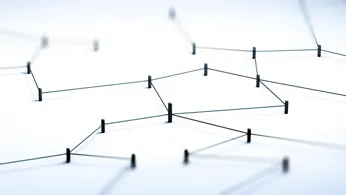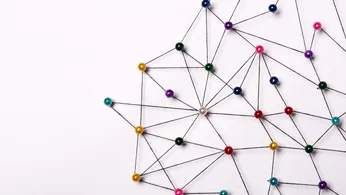Stili di comunicazione sul posto di lavoro e strategie per migliorare la comunicazione di squadra
Padroneggiare gli stili e le strategie di comunicazione sul posto di lavoro è fondamentale per costruire team forti, promuovere la collaborazione e migliorare la produttività. Dagli strumenti digitali alle interazioni personali, imparate a creare una cultura della comunicazione che mantenga i dipendenti impegnati e allineati.
In questa pagina
Good communication can be just as stimulating as coffee. And just like coffee, there are different brews of workplace communication styles—each with its own distinct flavor and impact. Understanding communication styles in the workplace helps teams collaborate better, resolve conflicts efficiently, and drive business success.
A quick look at legendary leaders and CXOs—and how they interact with their world—offers an exciting glimpse into different types of communication styles and their real-world impact.
Take Jeff Bezos, for example. Before each meeting, the Amazon Hulk meticulously reads exactly six pages of a memo in silence, an intense focus session that may seem unsettling to new hires. Bill Gates has a more animated approach—rocking his chair during discussions, with the speed and intensity of the motion serving as a direct indicator of his engagement level.
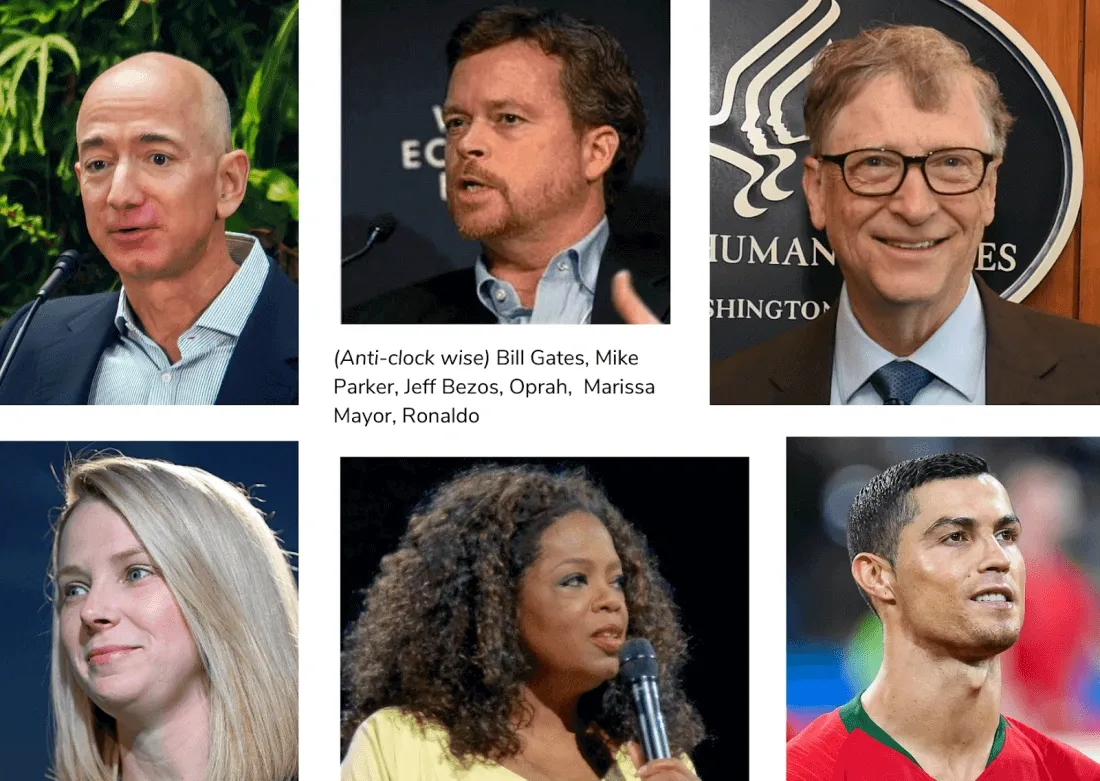
Then there’s Mike Parker, CEO of Nike, who balances structure and creativity by dividing his notebook into two halves—one for notes, the other for doodles. Oprah Winfrey’s communication style, on the other hand, is built on deep personal connections, engaging her audience with warmth and genuine curiosity.
Marissa Mayer, former CEO of Yahoo, prioritizes structured interactions, personally meeting and approving every new hire. Meanwhile, on the football field, Cristiano Ronaldo’s iconic goatee scratch after scoring big goals communicates a bold message—his unspoken claim to being the greatest of all time.
These leaders have mastered their communication styles in the workplace, using distinct approaches that align with their personalities and leadership philosophies. Whether through structured briefings, energetic interactions, or personal engagement, the way we communicate shapes our professional influence.
Understanding the types of communication styles can help individuals and teams find their voice, enhance collaboration, and create a workplace where ideas flow freely.
Stili di comunicazione della leadership sul posto di lavoro
Ecco gli esempi di stili di comunicazione della leadership che bisogna assolutamente conoscere:
1. Siate voi. Siate comunicativi.
Ciascuna di queste persone, anche se non sta parlando o scrivendo di per sé, sta comunicando seguendo il suo "modello di firma" per vibrare con l'ambiente attraverso un mix di indicatori, linguaggio del corpo e abitudini.
Ognuna di queste tecniche è così efficace perché non cerca di adattarsi a uno stampo o a una "migliore pratica di comunicazione del settore", ma cerca semplicemente di raggiungere l'altra parte in modo spontaneo e genuino.
Sono semplicemente se stessi, in modo spudorato e senza fronzoli. La loro sincerità traspare dalla loro spontaneità e la loro personalità lascia un segno persistente nella nostra coscienza.
2. Comunicare. Impegnarsi. Ripetere.
Communication is central to engaging the mind and soul, whether at home or the workplace. So, what lessons do these leaders leave for us? How do we replicate their spark in our own life?
La risposta è quasi follemente logica e deliziosamente semplice. Se questi leader sono diventati delle leggende rifiutando di soccombere alle tendenze e osando essere se stessi (e rimanendo tali anche quando si alzano le sopracciglia o si alzano gli occhi), allora è proprio quello che dovremmo fare anche noi.
After all, our message is sharpest, clearest, and loudest when authentic. There are a few better ways to stay engaged and engage others – be it teammates, partners, or clients. This case is relevant whether you're leading virtual teams or meeting with clients in real life.
Tipi di stili di comunicazione sul posto di lavoro
Per essere se stessi, bisogna sapere chi si è. Come in tutte le cose della vita, il contesto aiuta a costruire il contenuto.
So, before you unlock the engaging powers of communication at the workplace, it will help to figure out your communication personality first so that you can map your way forward while keeping things loose and ‘in-the-moment’.
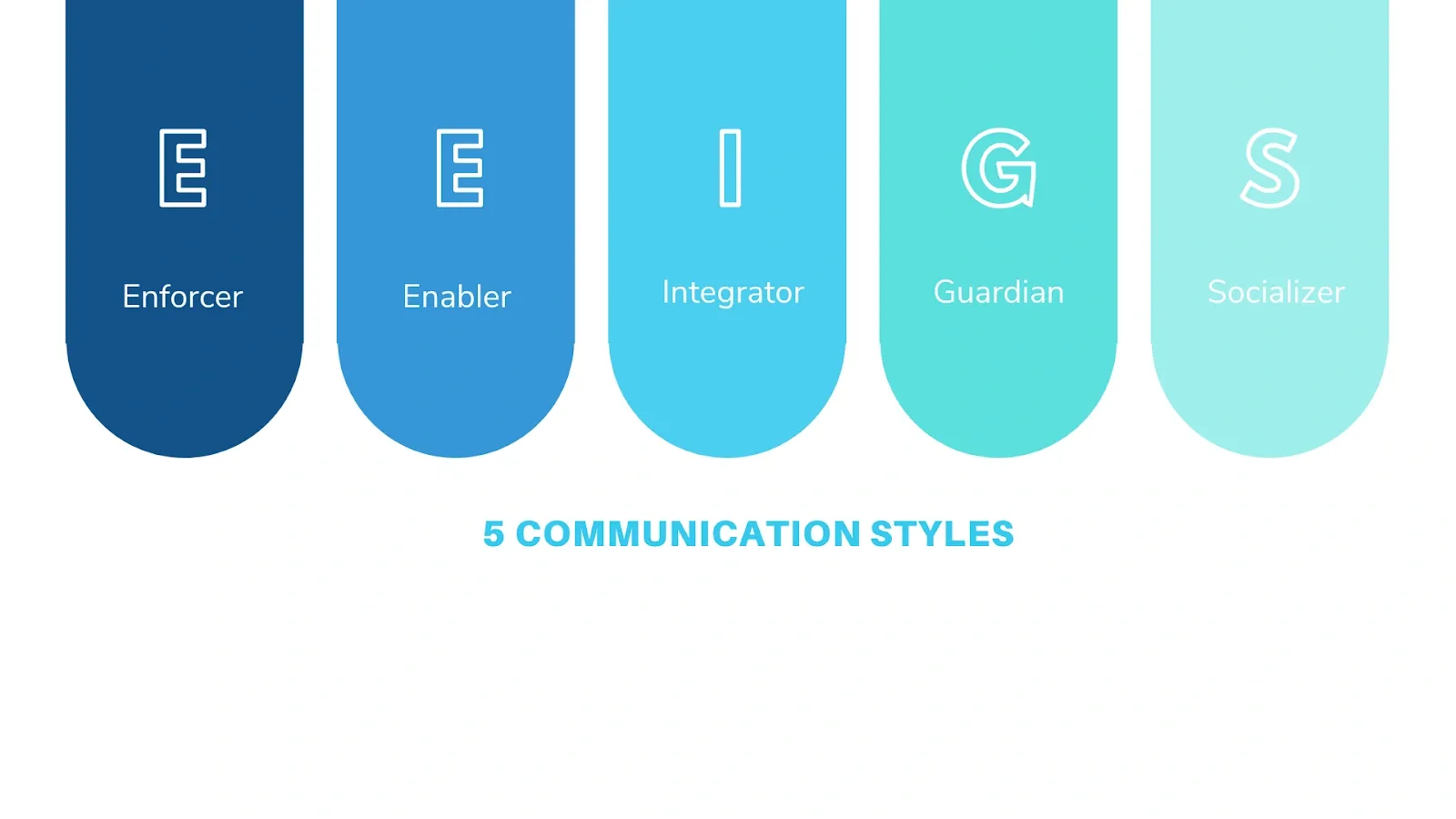
1. Sei un Enforcer?
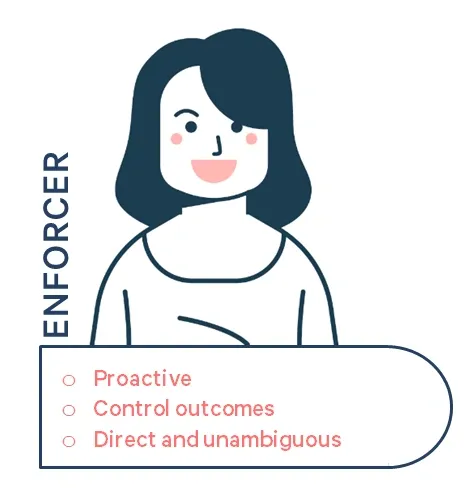
Sono personalità proattive che credono nel prendere in mano le situazioni. Stabiliscono il tono, danno forma alla narrazione e controllano il risultato. Il loro stile di comunicazione preferito è solitamente privo di abbellimenti, diretto e deliberatamente privo di ambiguità. Sono persone che fanno sul serio e non usano mezzi termini.
Se da un lato questo stile "napoleonico", che conduce il campo di battaglia dal fronte, può essere un tratto magnetico da possedere e spesso ispira e stimola un intero team all'azione, dall'altro è anche un approccio che a volte può calpestare i territori o far arrabbiare una o due penne.
Il trucco consiste nel mettersi nei panni dell'altro, il che può bilanciare l'equazione aumentando il quoziente di empatia, aiutando l'esecutore a vedere entrambi i lati della realtà con chiarezza e a diventare un comunicatore più completo e maturo.
2. Siete un facilitatore?
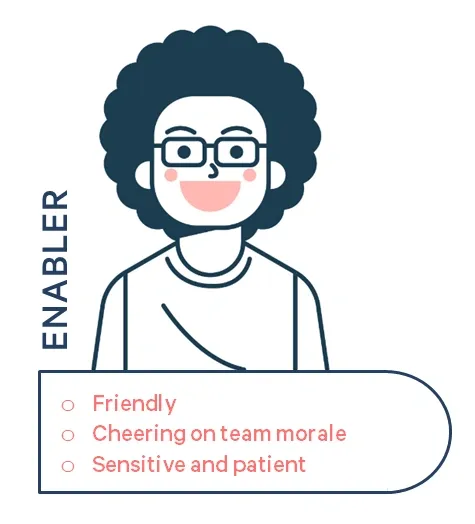
È la tribù più amichevole sul posto di lavoro (o al di fuori di esso). Si tratta di persone che sostengono sempre gli sfavoriti, che adottano una nuova idea o che, in generale, fanno il tifo per il morale della squadra, in modo non del tutto consapevole, per ottenere i risultati desiderati. Aspettatevi molti pollici in su, segni di vittoria e pacche sulle spalle da questo gruppo.
Quando si tratta di comunicare, sono sensibili, pazienti e accomodanti, con una presenza che cresce con voi. Sebbene questo sia un vantaggio evidente, non è privo di un rovescio della medaglia.
Lasciate a se stesse, le persone di questo sottogruppo possono talvolta apparire troppo ficcanaso o invadenti. Possono persino correre il rischio di ignorare i propri doveri, dedicando una quantità eccessiva di tempo a risolvere gli incendi altrui.
Infine, essendo un tipo sensibile, sono anche inclini a soffrire di cuore quando la loro positività rimane senza risposta o viene ignorata. I facilitatori sono persone che hanno bisogno di tracciare continuamente dei limiti e di dare priorità ai loro KRA, mantenendo il loro splendore interiore.
3. Siete un integratore?
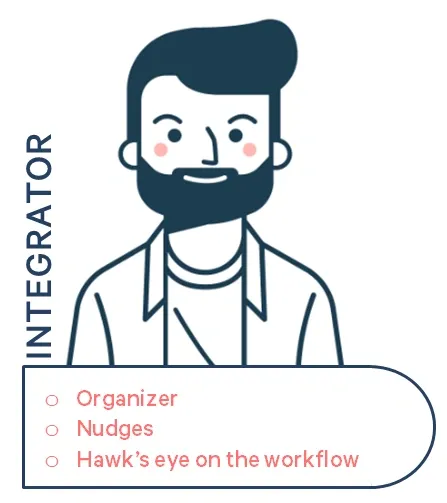
Say Hello! To the ‘Natural Born Delivery-Leads’ of your universe. Integrators make for excellent event organizers and project managers, holding the flock together and ensuring every nut and bolt of the jigsaw works to clock precision.
Per quanto riguarda l'interazione con i lavoratori, si tratta di una razza esperta con un'ottima padronanza della psicologia, che sa esattamente come e quando spingere e stuzzicare, controllando a piacimento il morale della squadra (e le prestazioni, per estensione) e orchestrando lo spettacolo con la finezza di un direttore d'orchestra.
Sebbene la loro personalità possa variare da riservata a socievole, fino a una via di mezzo, in termini di comunicazione possono optare per un approccio misurato, preferendo tenere un occhio di falco sul flusso di lavoro (e risparmiare l'energia vocale per le situazioni di crisi).
Come consiglio, questo tipo di persona deve ricordare che la nave - equipaggiata con anime di talento - è in grado di prendersi cura di se stessa, e quindi va benissimo "lasciarsi andare" e rilassarsi di tanto in tanto.
4. Siete un tutore?
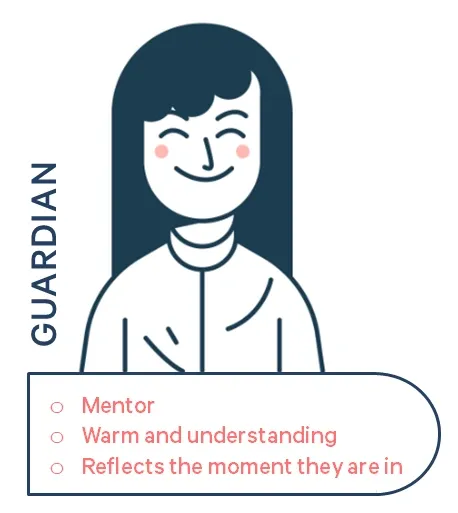
Pastore, zio agonizzante e filosofo in una sola persona, ecco il mentore e protettore della squadra (sì, quasi tutte le squadre ne hanno uno, almeno nello spirito). Tendenzialmente, si tratta di una figura un po' più anziana, con un bagaglio di esperienza che serve a tirar fuori perle di saggezza quando è il momento di fare la parte del confidente bonafide/pro-bono, ma francamente si tratta di una regola con molte eccezioni.
Guardians tend to be warm, understanding, and mature – and generally have (or make) time for you. The reverse is equally valid, and you will come across those who have ‘crossed over to the dark side’ (to borrow a phrase from Star Wars), turning into draconian taskmasters and oppressive despots.
In their defense, they will say (and probably believe it deep down, too) that they are merely doing it for the good of the brood and protecting their cause.
Al loro meglio, tuttavia, i Guardiani possono avere un effetto calmante e rigenerante sulla squadra che è davvero prezioso. La loro tecnica di comunicazione - come tutte le grandi forme di comunicazione - tende a riflettere chi sono e il momento in cui si trovano, confortando, censurando o ispirando, a seconda dell'azienda in questione.
5. Siete dei socializzatori?
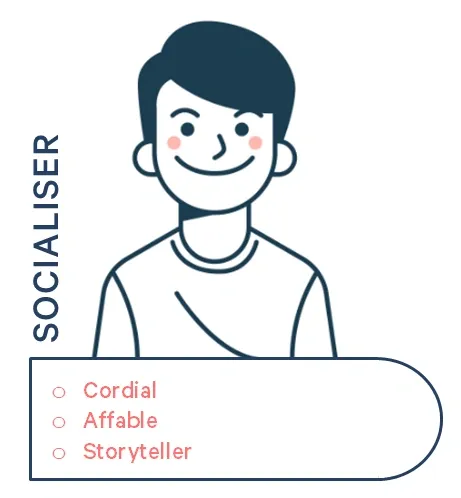
Questo gruppo è l'anima della festa e tutti noi sappiamo che i nostri posti di lavoro - anche se digitalmente distanti - hanno bisogno di fare festa, forse più che mai, per rimanere felici e sani di mente. Cordiali, generosi ed estroversi, i socializzatori possono spesso essere la colla che tiene insieme l'umore del team, diffondendo il sole della gioia e del brivido di cui tutti abbiamo bisogno per superare la nostra routine.
Con la loro natura colorata che spesso si ritrova nel loro comportamento e nei loro discorsi, questo è un gruppo che vi delizierà con il loro stile di narrazione unico e vi infiammerà con la loro contagiosa positività.
If one were to nitpick, one could probably say that Socializers, like Enablers, have a ‘thing’ for overstepping their boundaries and barge into personal spaces (without meaning), given their naturally extroverted genes.
That said, the latter remains a priceless quality for any organization, especially when change – and with it, confusion and ambiguity - seems to be the flavor of every season.
Amplifying workplace communication: 12 strategies that work
Workplace communication thrives on structure, rhythm, and seamless coordination like a finely tuned orchestra. From fostering real-time collaboration to bridging leadership-employee gaps, businesses today rely on innovative communication strategies to keep teams aligned, engaged, and thriving.
Let’s dive into some game-changing approaches that redefine how teams connect and interact.
1. Powering up with collaborative communication platforms
Modern workspaces are buzzing with rapid conversations, shared files, and endless tasks. The antidote to scattered communication? Collaborative communication platforms that unify chat, video calls, file sharing, and project management in one seamless ecosystem.
These digital spaces act as the virtual command center for teamwork, keeping everyone on the same page without endless email threads or lost messages.
📕 For instance:
- Slack organizes discussions into topic-based channels, integrates with countless third-party apps, and simplifies workflows. Dropbox uses Slack to connect teams across time zones, ensuring instant updates and real-time collaboration.
- Microsoft Teams merges chat, video calls, and file sharing into a single interface. Accenture, a global powerhouse, relies on Teams to synchronize communication across its vast network, driving higher efficiency and streamlined teamwork.
With the right platform in place, communication bottlenecks become a thing of the past, paving the way for smarter, faster, and more transparent work interactions.
2. Holding town hall meetings: Where leadership meets the workforce
A thriving workplace is built on transparency and shared purpose. Town hall meetings provide a stage where leaders and employees engage in open dialogue—sharing updates, celebrating wins, and addressing concerns in real-time.
These forums dismantle hierarchies, offering employees direct access to leadership while ensuring that company goals resonate at every level.
📕 Take inspiration from:
- Facebook, where Mark Zuckerberg holds regular town halls, fielding unfiltered questions from employees. This practice embeds openness and alignment into the company’s DNA.
- General Electric (GE) hosts town halls where leaders discuss business strategy, challenges, and performance updates—reinforcing trust and team cohesion.
Town halls aren’t just meetings; they’re culture-builders that turn corporate communication into a two-way street—one where voices from every level of the organization are heard and valued.
3. Implementing a peer feedback system: Elevating growth through recognition
Feedback isn’t just a performance metric—it’s a catalyst for learning, collaboration, and personal growth. A well-structured peer feedback system encourages employees to acknowledge each other’s contributions, fostering a workplace culture rooted in appreciation and improvement.
When employees give and receive feedback from their peers, it breaks down silos and creates an environment where constructive insights fuel professional development.
📕 Who’s doing it right?
- Google’s “Peer Bonuses” system allows employees to nominate colleagues for bonuses when they go above and beyond. Whether it’s lending expertise or offering support outside their role, this initiative cultivates collaboration and mutual appreciation.
- LinkedIn integrates peer feedback into performance reviews, ensuring employees get a 360-degree perspective on their strengths and areas of growth. This system nurtures continuous improvement and meaningful workplace connections.
In a workplace where recognition and feedback flow organically, employees don’t just perform—they thrive.
4. Digital suggestion boxes: Turning ideas into action
The classic suggestion box has evolved. Today’s digital platforms amplify employee voices by offering a real-time, interactive space where ideas aren’t just submitted—they’re voted on, discussed, and refined.
These platforms encourage innovation, boost engagement, and create an open culture where employees feel empowered to contribute beyond their job roles.
📕 Who’s doing it right?
- Adobe’s "Kickbox" initiative hands employees a structured innovation kit packed with tools, best practices, and a step-by-step process to experiment with ideas. If an idea gains traction, leadership steps in to explore its full potential. The result? A workplace buzzing with creativity and employee-driven solutions.
- Whirlpool’s innovation portal allows employees worldwide to submit, vote on, and refine ideas. The most promising concepts get developed into real products—proving that open communication isn’t just good for engagement, it’s good for business.
A workplace that listens to its employees doesn’t just retain talent—it builds a culture of innovation, transparency, and growth.
5. Cross-departmental team building: Breaking the silos
Silos can be the silent killer of workplace collaboration. When teams stay confined to their departments, knowledge stays locked in, and company-wide goals get lost in translation.
Cross-departmental team-building activities dismantle these walls, fostering relationships across teams and creating a workplace where everyone moves forward together.
📕 The innovators:
- Spotify’s “guilds and chapters” model ensures knowledge flows beyond department lines. While squads handle specific projects, guilds bring together like-minded employees across teams to share expertise and best practices.
- Zappos thrives on culture-first engagement. From company-wide social events to interdepartmental meetups, they build relationships beyond job roles, making communication second nature.
When employees understand how different teams work, collaboration happens faster, problem-solving becomes more creative, and company-wide unity strengthens.
6. Reverse mentorship: Flipping the script on learning
Mentorship has traditionally been a one-way street—senior employees passing down wisdom to junior staff. But reverse mentorship turns that model on its head, giving younger employees the chance to teach senior leaders about emerging trends, digital tools, and evolving workplace dynamics.
This approach bridges generational gaps, modernizes leadership perspectives, and strengthens internal communication across experience levels.
📕 Game-changers in action:
- General Motors (GM) pairs younger employees with senior executives, giving leadership a crash course in new technologies and digital trends. The result? A more informed leadership team that stays ahead of the curve.
- Cisco’s reverse mentorship program connects senior executives with digital natives who introduce them to social media, AI, and digital communication tools. The program has been a game-changer in aligning leadership with the ever-evolving digital landscape.
When knowledge flows both ways, companies future-proof leadership, enhance collaboration and create a culture of lifelong learning.
7. Open-plan workspaces with dedicated quiet zones: The best of both worlds
Workplace design isn’t just about aesthetics—how employees interact, collaborate, and stay productive.
Open-plan spaces encourage spontaneous conversations and teamwork, but they can become a distraction without balance. That’s why the best-designed offices blend open collaboration areas with dedicated quiet zones, creating a workplace where employees choose how they work best.
📕 Smart workplace design in action:
- Pixar’s headquarters was designed to maximize random interactions. The central atrium—home to the cafeteria, mailboxes, and restrooms—encourages employees from all departments to cross paths, sparking unplanned yet valuable conversations.
- Deloitte’s Amsterdam office embraces flexible workspace design. While open collaboration areas promote teamwork, employees can also access private booths, focus zones, and quiet spaces to ensure deep work isn’t sacrificed.
The secret to an effective workspace? A balance between collaboration and focus.
8. No-email days: Cutting through the clutter
Emails may be efficient, but productivity takes a hit when inboxes become battlefields of unread messages. Constant digital chatter can lead to overload, miscommunication, and missed priorities.
The solution? "No-email days" or designated blackout periods that encourage teams to engage face-to-face, through calls, or via alternative communication platforms.
📕 Who’s setting the standard?
- Atos, a global IT company, introduced a zero-email initiative, dramatically reducing internal emails and pushing employees to embrace real-time conversations and collaboration tools. The results? Improved productivity, streamlined workflows, and a stronger culture of direct communication.
- Volkswagen tackled work-life balance by blocking after-hours emails for certain employees. Their email servers pause after shifts and resume the next day—giving employees true downtime and ensuring that work communication happens with intention, not intrusion.
When emails take a backseat, real conversations take the wheel.
9. Rotation and secondment programs: Breaking silos, building connections
Want employees to see the bigger picture? Move them around. Rotation and secondment programs shift employees between departments, roles, or even countries, promoting cross-functional collaboration, knowledge sharing, and a deep understanding of the business as a whole.
📕 Who’s leading the charge?
- Procter & Gamble (P&G) actively rotates employees across roles and functions, giving them a 360-degree perspective on company operations. This approach helps break down departmental silos and fosters seamless cross-team communication.
- HSBC, the global banking giant, practices international rotation for leadership roles, exposing employees to different markets, cultures, and best practices. The result? A workforce that communicates across borders with ease.
When teams experience different perspectives firsthand, collaboration stops being an afterthought—it becomes second nature.
10. Lunch and learn: Feeding minds while breaking barriers
Imagine grabbing a bite while gaining valuable insights from colleagues across departments. Lunch and learn sessions turn casual breaks into power-packed knowledge-sharing moments, fostering cross-team learning and open conversations in an informal setting.
📕 Who’s making it happen?
- Etsy’s "Etsy School" lets employees teach each other anything—from coding languages to crafting techniques. This initiative not only promotes personal development but strengthens workplace bonds.
- Goldman Sachs’ "Talks at GS" series brings in industry experts and internal leaders to discuss everything from financial trends to personal growth. Employees walk away inspired, informed, and better connected.
Learning doesn’t need a classroom—it just needs the right environment.
11. Walk-and-talk meetings: Unleashing ideas on the move
Why sit in a boardroom when you can talk strategy while stretching your legs? Walk-and-talk meetings swap stuffy conference rooms for open spaces, encouraging candid conversations, creative thinking, and sharper focus.
📕 Visionaries who walk the talk:
- Steve Jobs was famous for his walking meetings, believing they fueled big ideas and deep discussions. Many of Apple’s pivotal decisions were made not at a desk, but on foot.
- Mark Zuckerberg follows the same principle, conducting key meetings while walking. A relaxed setting often makes tough conversations feel more natural, leading to better brainstorming and more open dialogue.
Sometimes, the best solutions aren’t found sitting down—they’re discovered in motion.
12. Digital detox retreats: Unplugging to reconnect
In an always-on world, true connection sometimes requires a full disconnect. Digital detox retreats allow employees to step away from screens, recharge, and build stronger in-person relationships through team activities, brainstorming sessions, and face-to-face collaboration.
📕 Who’s making unplugging a priority?
- HubSpot’s annual mystery vacations take employees on digital-free trips, where the focus is on real interactions, bonding, and relaxation. The result? A refreshed team that returns with a stronger sense of unity.
- Daimler’s "Mail on Holiday" policy lets employees auto-delete emails while on vacation, ensuring they return to work without an overflowing inbox. The outcome? Healthier work-life balance and more engaged teams.
Sometimes, stepping back is the best way to move forward.
Break down communication barriers with Empuls
Effective workplace communication isn’t just about exchanging information—it’s about building connections, fostering engagement, and creating a culture where employees feel heard. This is where Empuls comes in, offering a social intranet that transforms internal communication into a seamless and engaging experience.
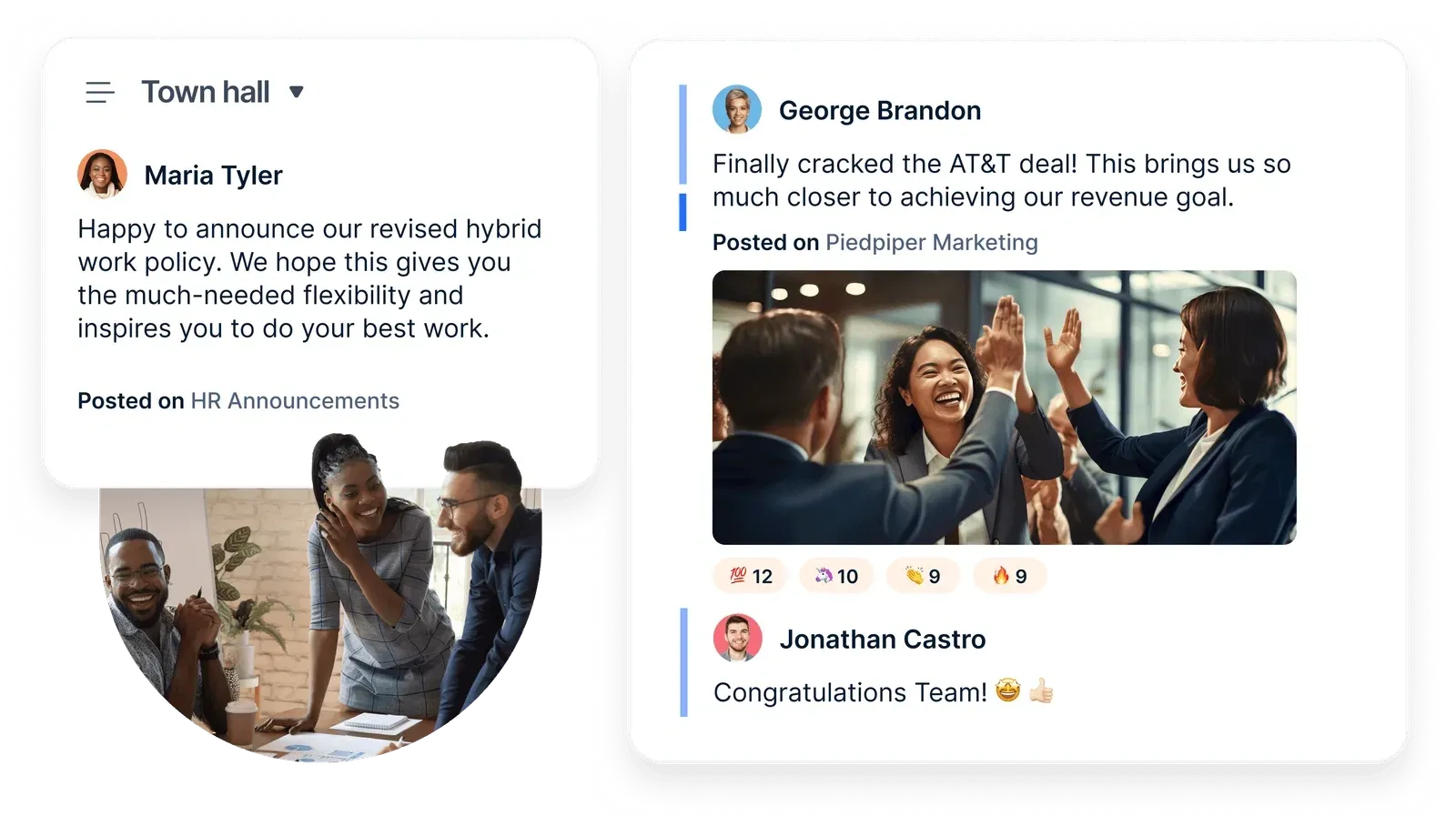
- Creates a central hub for communication
Empuls’ social intranet provides a single platform where employees can share updates, collaborate on projects, and stay informed—eliminating scattered emails and information silos.
- Encourages two-way communication
Unlike traditional top-down communication, Empuls allows employees to voice opinions, participate in discussions, and engage with leadership, fostering a more inclusive workplace.
- Promotes recognition and feedback
Workplace communication isn’t just about tasks—it’s about building relationships. Empuls enables peer-to-peer recognition and structured feedback, ensuring that employees feel valued and appreciated.
- Enhances engagement through social interactions
With features like interactive posts, polls, and surveys, Empuls makes internal communication more dynamic, encouraging employees to participate actively rather than passively consume information.
- Streamlines company-wide announcements
Empuls ensures important updates reach the right employees at the right time, reducing miscommunication and ensuring team alignment.
Integrating Empuls into your workplace can refine communication strategies, strengthen team collaboration, and create a more engaged workforce.
Conclusione
Qualunque sia il vostro stile di comunicazione, è importante che lo custodisciate, lo nutriate e lo celebriate nei momenti di interazione quotidiana con i collaboratori e i team.
Che si tratti di un vivace Buongiorno per iniziare la giornata, di un semplice Ciao a qualcuno di un altro reparto, di un caloroso Grazie a un collega che vi ha sostituito quando siete dovuti andare via prima la settimana scorsa, di una premurosa sollecitazione per ricordare a qualcuno una scadenza incombente, di un Batti cinque (preferibilmente in pubblico) che celebra il potenziale di un collega. a un collega che vi ha sostituito quando siete dovuti andare via prima la settimana scorsa, un'esortazione premurosa per ricordare a qualcuno una scadenza incombente, un batti cinque (preferibilmente in pubblico) che celebra il potenziale di un nuovo arrivato o il contributo di un eroe non celebrato della caserma, o un gioco divertente che permette al team di competere su un obiettivo con il più sano degli intenti, non c'è modo migliore per dire "Siamo insieme!" che mantenere i canali di comunicazione aperti, vivi e attivi!
Now that we are physically distanced, it’s natural to miss these magical ‘touch-points’ that once used to be de rigueur at the office, touching our hearts and souls. Transfer them seamlessly to your digital universe with Empuls, and you don’t have to miss a beat again.
Haven’t you tried it yet? It’s time to communicate with our team - in your style. Contact us now.








